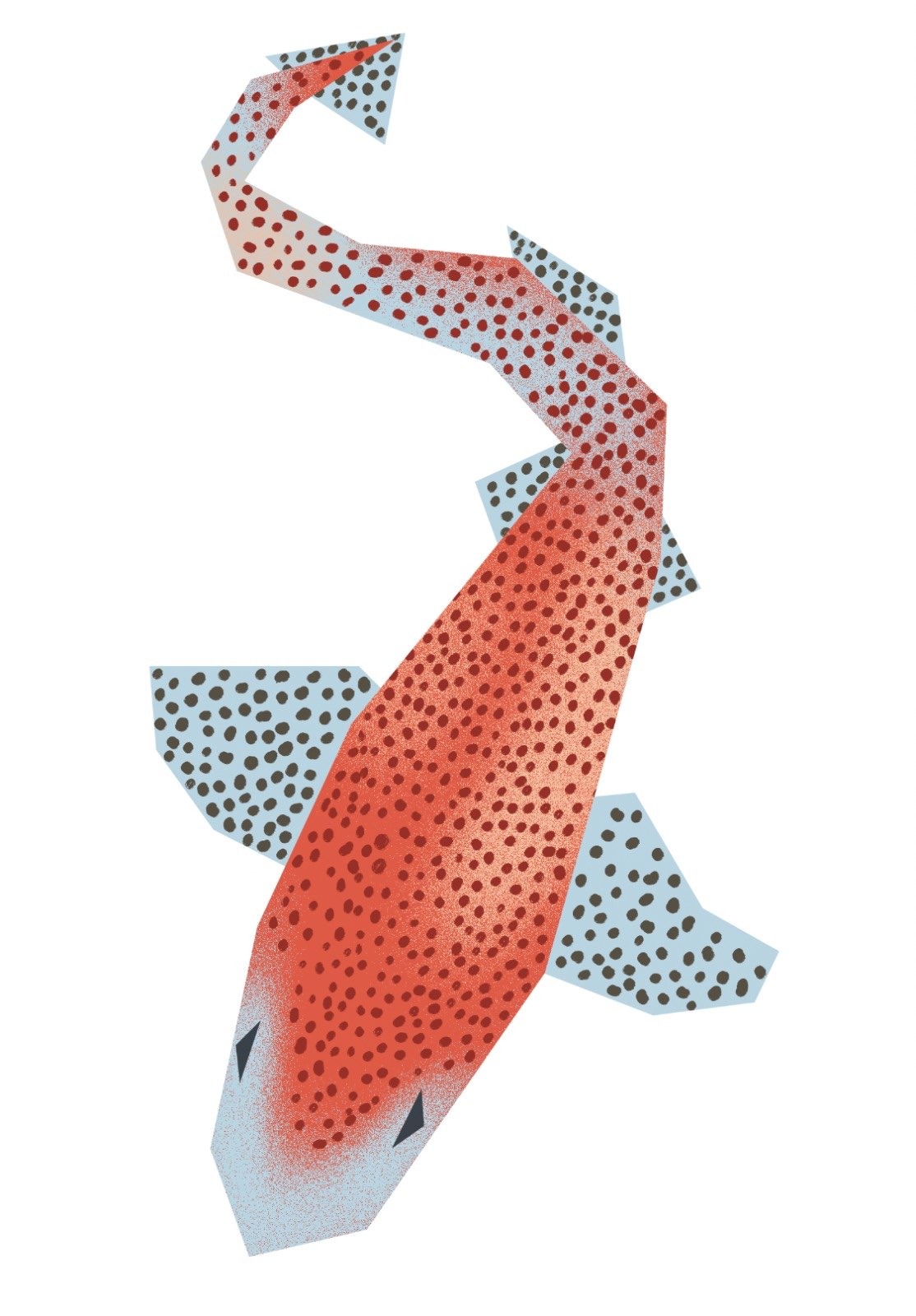
Illustration and Mural by Natty Peach
Scyliorhinus canicula (Linnaeus, 1758)
Scyliorhinidae (SYC)
EN - Small-spotted catshark
PT - Pata-Roxa, Gata ou Caneja
FR - Petite roussette
ES - Pintarroja
PT - Pata-Roxa, Gata ou Caneja
FR - Petite roussette
ES - Pintarroja

Scientific information in collaboration with Ana Magalhães FerreiraMarine biologist specializing in fisheries biology, biological sampling, taxonomy and marine biodiversity, sclerochronology, GIS.
︎︎︎ 100 cm
︎ 10 - 400 m
︎︎︎ 12 years
︎ Solitary and Nocturnal
︎ Rocks
︎ Molluscs and Crustaceans
︎ Trawl and Gillnet
Least Concern (LC) means it has been evaluated against the Red List criteria and does not qualify for Critically Endangered, Endangered, Vulnerable or Near Threatened.
- The Small-spotted catshark is the most common shark in Europe and can measure up to around 1 meter.
- During the day it hides in crevices and caves and only comes out at night to hunt.
- They group together in separate schools, made up of only females and only males. They both live in coastal waters and only come together at the end of summer, for mating, in deeper waters.
- The female keeps the sperm and deposits the eggs throughout the year (only two at a time).
- The eggs, capsules or mermaid purses, have very resistant threads at the ends that serve as anchors that are attached to algae or other structures.
- Females exhibit philopatric behavior (from the Greek “home love”), that is, they return to the place where they were born, fed or laid their eggs.
- They detect weak electrical fields emitted by other animals (ampullae of Lorenzini).
- Its skin is so rough that it was used as sandpaper!
Spawning November to July
Type Oviparous
Female Maturation 44 cm
Male Maturation 39 cm
Incubation Period 5 to 11 months
